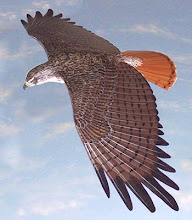We Leave These Ruins
Anouar Brahem: Le Voyage de Sahar
Debashish Bhattacharya: Raga Bhimpalasi
We enter a canyon today with low, red walls. A short distance below its head we discover the ruins of an old building on the left wall. There is a narrow plain between the river and the left wall just here, and on the brink of a rock two hundred feet high stands an old house. Its walls are of stone, laid in mortar, with much regularity. It was probably built three stories high; the lower story is yet almost intact; the second is much broken down, and scarcely anything is left of the third. Great quantities of flint chips are found on the rocks nearby, and many arrowheads, some perfect, others broken.
Fragments of pottery are strewn about in great profusion. On the face of the cliff, under the building, and along down the river for two or three hundred yards, there are many etchings. Two hours are given to the examination of these interesting ruins, then we run down fifteen miles farther, and discover another group. The principal building was situated on the summit of a hill. A part of the walls are standing, to the height of eight or ten feet, and the mortar yet remains in some places. The house was in the shape of an L, with five rooms on the angle, and two in each extension. In the space in the angle there is a deep excavation.
From what we know of the people in the province of Tusayan, who are, doubtless, of the same race as the former inhabitants of these ruins, we conclude that this was a kiva,
or underground chamber, in which their religious ceremonies were performed.
We leave these ruins, and run down two or three miles, and go into camp about mid-afternoon. And now I climb the wall and go into the back country for a walk.
The sandstone through which the canyon is cut is red and homogenous, being the same as that through which Labyrinth Canyon runs. The smooth, naked rock stretches out on either side of the river for many miles, but curiously carved mounds and cones
are scattered everywhere, and deep holes are worn out. Many of these pockets are filled with water. In one of these holes, or wells, twenty feet deep, I find a tree growing. The excavation is so narrow that I can step from its brink to a limb on the tree, and descend to the bottom of the well down a growing ladder. Many of these pockets are potholes, being found in the course of little rills, or brooks, that run during the rains which occasionally fall in this region; and often a few harder rocks, which evidently assisted in their excavation, can be found in their bottoms. Others, which are shallower, are not so easily explained. Perhaps they are found where softer spots
existed in the sandstone, places that yielded more readily to atmospheric degradation, and where the loose sands were carried away by the winds.
Just before sundown, I attempt to climb a rounded eminence, from which, I hope to obtain a good outlook on the surrounding country. It is formed of smooth mounds, piled one above another. Up these I climb, winding here and there, to find a practicable way, until near the summit they become too steep for me to proceed. I search about, a few minutes, for a more easy way, when I am surprised at finding a stairway, evidently cut into the rock by hands.
At one place, where there is a
vertical wall of ten or twelve feet, I find an old, ricketty ladder. It may be that this was a watchtower of that ancient people whose home we have found in ruins. On many of the tributaries of the Colorado I have heretofore examined their deserted dwellings. Those that show evidences of being built during the latter part of their occupation of the country are, usually, placed on the most inaccesible cliffs. Sometimes, the mouths of caves have been walled across, and there are many other evidences to show their anxiety to secure defensible positions. Probably the nomadic tribes were sweeping down upon them, and they resorted to these cliffs and canyons for safety. It is not unreasonable to suppose that this orange mound was used as a watchtower. Here I stand, where these now lost people stood centuries ago, and look over this strange country.
I gaze off to great mountains in the northwest which are slowly covered by the night until they are lost, and then I return to camp. It is no easy task to find my way down the wall in the darkness, and I clamber about until it is nearly midnight before I arrive.
--John Wesley Powell
journal entry for July 29, 1869











<< Home